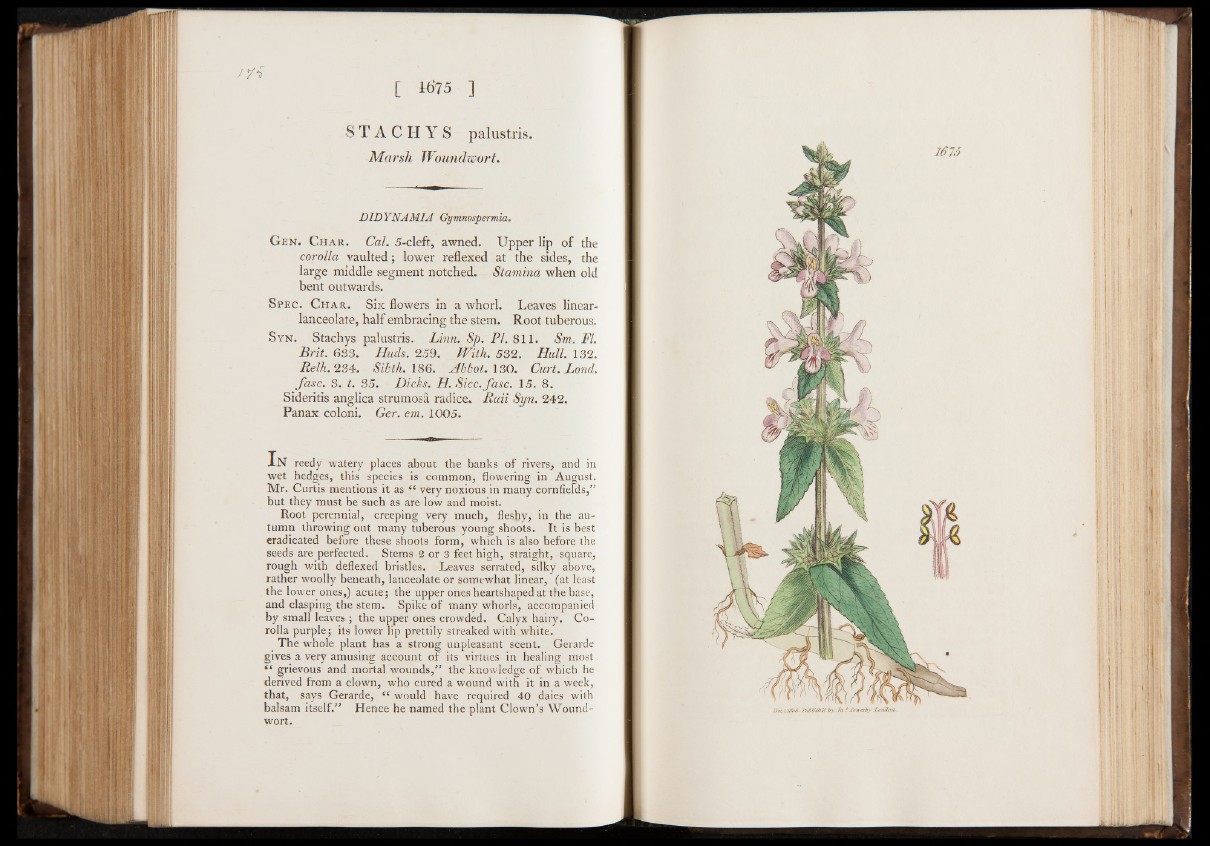
STACHYS palustris.
Marsh Woundwort.
DIDYNAMIA Gymnospermia.
Gen. Char. Cal. 5-cleft, awned. Upper lip of the
corolla vaulted; lower reflexed at the sides, the
large middle segment notched. Stamina when old
bent outwards.
Spec. Char. Six flowers in a whorl. Leaves linear-
lanceolate, half embracing the stem. Root tuberous.
Syn. Stachys palustris. Linn. Sp. PL 811. Sm. FI.
Brit. 633. Huds. 259. With. 532. Hull. 132.
Relh. 234. Sibtk. 186. Hbbot. 130. Curt. Lond.
fa s c . 3. t. 35. Dicks. H. Sicc.fasc. 15. 8.
Sideritis anglica strumosa rad ice. Rail Syn. 242.
Panax coloni. Ger. em. 1005.
I n reedy watery places about the banks of rivers, and in
wet hedges, this species is common, flowering in August.
Mr. Curtis mentions it as “ very noxious in many cornfields,”
but they must be such as are low and moist.
Root perennial, creeping very much, fleshy, in the autumn
throwing out many tuberous young shoots. It is best
eradicated before these shoots form, which is also before the
seeds are perfected. Stems 2 or 3 feet high, straight, square,
rough with deflexed bristles. Leaves serrated, silky above,
rather woolly beneath, lanceolate or somewhat linear, (at least
the lower ones,) acute; the upper ones heartshaped at the base,
and clasping the stem. Spike of many whorls, accompanied
by small leaves ; the upper ones crowded. Calyx hairy. Corolla
purple; its lower lip prettily streaked with white.
The whole plant has a strong unpleasant scent. Gerarde
gives a very amusing account of its virtues in healing most
“ grievous and mortal wounds,” the knowledge of which he
derived from a clown, who cured a wound with it in a week,
that, says Gerarde, “ would have required 40 daies with
balsam itself.” Hence he named the plant Clown’s Woundwort.